WORLDS OF CHANGE: The (Mis)Adventures of Development in Mentawai
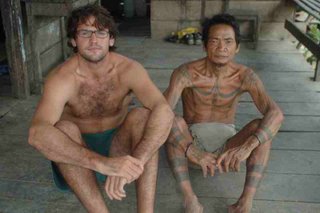
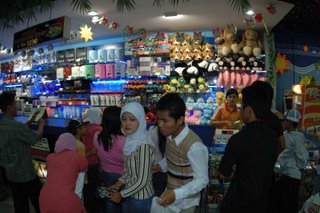
And there it was – the video arcade. Next to the food court – now empty because of Ramadan – it glistened with the dull, throbbing pulse that those of its kind share throughout the modern (and not-so) world. I walked in, attracted like a mosquito to the fluorescence of something that I acknowledge as unhealthy, but perpetually addictive nonetheless. As I watched jilbab-clad teenage girls bounce on mock-skateboard platforms, and older men vying for rice cookers at the ticket trade-in counter, a wave of sadness washed over me. This is what we’ve brought, I thought. This is the mark we’ve left. I rummaged through my bag for my camera, and snapped a few shots. “Excuse me, mister. You can’t take photo here. Please,” and the short, slender Indonesian man who was confronting me with a Cheshire cat grin pointed the way to the door. “Gladly,” I replied. Three hours until departure, and I was ready for a trip to another world.
The unexplored portions of the terrestrial world are gone. A rock wall on Baffin Island or an obscure beach in the Philippines may offer blank canvases where human feet have never tread, but most likely they are within striking distance of a well-trodden path or brand new Carnival Cruise Line circuit. The rivers and mountains that once proved impassable, stoking the fires of fear and excitement for the countless expeditions they enticed, are now catalogued, photographed, forested and touristed to the point where exploration is as easily accomplished via Google Earth as by the non-digital acts of trekking and tramping. The only true venues of exploration that we have left are the untrammeled spaces that our brains are incapable of comprehending without empirical encounters. And even then, the internet and other media of instantaneous and accurate information shape the future realtime impressions that we may or may not have.
Consequently, the exploration of this generation and millennium rests on a different measure of creativity and discovery. What has been mapped and photographed is not by any means inherently understood or sufficiently appreciated. For those who are still beckoned by the call of adventure, we must search for new frontiers of a non-geographical bent. Rest assured, adventure is alive and well, it has merely entered a new and probably more all around beneficial phase. For this wanderlust-struck twenty-two year-old, the quest to reconcile development and the troubles that it brings has become a challenging and illuminating vehicle unto itself. For those compelled to experience the trials and tribulations (and tribal tattoos) of a far-removed reality, there has never been a better time to be alive, healthy, and in command of a bit of money and free time. The following story certainly roams at the edge of uncertainty. Hopefully it also sheds light on those more cerebral frontiers that, regardless of our proximity to adventure, we should all feel compelled to explore.

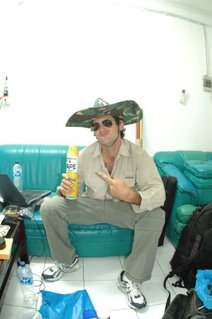
John and I had been in Padang, the provincial capital of West Sumatra, Indonesia, for three days. Our only goals were to stock-up on supplies, buy ferry tickets, and make contacts while staying with our buddy Ethan. The three of us met in Jakarta two months ago during the orientation for our current Fulbright scholarships. Along with another fifteen recent American college graduates, the three of us are teaching English in our respective cities, Ethan in Padang, John in a rural village in South Sumatra, and me in a mid-sized city in East Java. Because John and I both live in conservative Muslim areas, we were graced with a month-long break for Ramadan. We decided to make the trip up to Padang, where the allure of the isolated Mentawai Islands was too strong to resist.
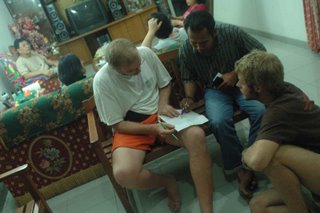
I made my first two trips to Indonesia following the massive Southeast Asian tsunami of December 2004. While photographing, researching, and volunteering on grants available through my alma mater, Dartmouth College, I also read about and became enthralled with Mentawai, a scant two hundred miles south of the devastated Aceh Province and Nias Island. While Nias took the brunt of the tsunami, and the Mentawais remained unaffected, my guidebooks talked about ritual tattoos, loincloths, and the Mentawai peoples’ struggle to retain control of their lives in the face of illegal logging operations and missionaries. As a photographer, I was drawn to anticipated images of tribal hunters bartering with cigarettes for kerosene and chocolate.
The Mentawais are made up of four main islands, all of which are accessible only by ferry or charter boat from Padang, although there is talk of an airstrip opening next year. German missionaries arrived at the start of the twentieth century, and despite their brutal massacre at the hands of locals, missionaries of many beliefs persevered in their quest to convert. The islands are now majority Protestant, with the remaining peoples split between a mix of Catholicism, Islam, Baha’i, and animist beliefs. Until the past twenty years, when surfers and trekkers started arriving, villagers shared everything in a communal, subsistence existence that still survives in some of the more isolated villages that I visited. However, as illegal loggers have continued to devour the forests, local people have been forced to reform their harmonious and holistic approach to life in favor of a more proactive resistance. Such dramatic and drastic changes are a hallmark of development and modernization, and Indonesia has more than its fair share of examples.
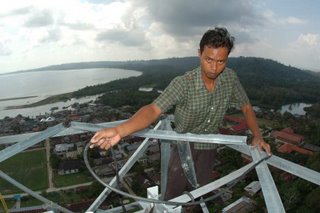
In discussing Indonesia, one can’t help structuring any social or political commentary around the paradoxes and bewildering juxtapositions that exist here on every level. Nationally, the current President Susilo Bambang Yudyhono – known affectionately as SBY – has staked his political career on fighting the vestiges of corruption left behind by the thirty-year Suharto regime. To a certain extent, his campaign is working. This past August, the business tycoon Adelin Lis was arrested and fined the equivalent of twenty-five million dollars for his role in the monstrous illegal logging trade that exists throughout the archipelago. Yet, corruption still exists on every level in Indonesia, and is so ingrained in the culture that eradicating it will take reforms from every sector and stage. When I went to get my motorcycle license with the vice principal of my school, we skipped the entire line, I was then handed an already completed sheet, which I was told to sign and return, along with the equivalent of fifteen dollars. Anyone with the resources (read: money) can expect similar benefits. Suharto’s regime was ultimately brought down my KKN – corruption, collusion and nepotism. If history teaches us anything, the people of Indonesia struggling to develop a sense of national promise would be well advised to start following a new path.
I woke with a start to what could only be the sound of automatic machine gun fire. Peering cautiously out of my berth, I was initially relieved, then amused, then mortified to see the hardest rain of my life pummeling the tin roofs of Muarasiberut, the largest city on Mentawai’s largest and most northern island, Siberut. After twenty-four hours on a rickety, vomit-lined ferry, we had arrived. Sort of.
After stumbling off the boat and being informed that it was seven miles to the nearest lodging house, John, our bags, and I succumbed to the ease of one dollar motorcycle rides. We had been told in Padang that we would arrive in Pokai, our jumping off point in northern Siberut, on Monday evening. Instead, we spent a grim twelve hours crossing the Mentawai Strait to Sipora, an island to the south, where we spent eight hours in port. After another six hour boat ride from hell, we were now spending the night in Muara, and were told that we would reach Pokai the following evening, a full forty-eight hours behind schedule. In our three months in Indonesia, we had both come to appreciate the concept of jam karet, rubber time, an Indonesian aphorism that accounts for delays in everything from postal deliveries to the start of class to the arrival of international airplanes. On our ride to Muara’s only hotel, the driver told me that the professional surfer cum pop music icon Jack Johnson had just left the island yesterday. It could have just been your average white guy looking for a laugh, or – and I think more likely – it was yet another absurd coincidox of life in Indo.
The next day, while waiting for our boat to Pokai, we met a twenty-five year-old Indonesian soldier named Indra. He was in Mentawai for three days distributing the equivalent of US$20,000 for microfinance initiatives in small villages. In addition to volunteering that information, he also showed us his Winchester .38, in the process pointing it fully loaded at John’s right kidney. While it was good to see the Indonesian military involving itself with grassroots civilian development, it was a bit disconcerting to extrapolate what other forms of laxity exist in such a massive bureaucracy where the officers on the ground brandish sidearms like plastic straws.
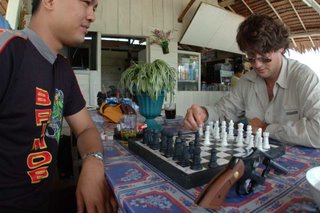
“Conservation will not work without education.” After yet another six hour vomitfest of a boat ride, we finally arrived in Pokai. I was seated in the house of a friend of a friend, talking with Fauzan, the thirty-two year-old manager and CEO of the Siberut Conservation Project. Originally from a wealthy suburb of Jakarta, he now spends four months at a time living in a tent in the jungles of Siberut, playing host to foreign researchers – mostly anthropologists and primatologists – while promoting sustainable forestry practices with indigenous peoples. “There is only one option now,” he continued. “Development. And that development means environmental degradation. Of course, people want electricity and television and blah blah blah. But when their forests are gone, and their children must move to Padang, what then? Many of the local people here are still in between. They don’t know what their lives mean today. ‘Do I forage? Do I farm? Do I do illegal logging?’ It is tough for us at the Conservation Project, because the local people don’t understand what we do, and they steal from us. Now, the illegal loggers come to North Siberut. They bring money and electricity, the local people sign contracts, the forests die, and we all lose.”
The next morning, we arrived at the Pokai police station around 9:30AM, where we woke-up the still slumbering police chief. After jumping out of bed and throwing on a t-shirt, he proceeded to intently review John and my photocopied passports. After sufficient mock understanding, he began transcribing the information into a large, water-stained journal on his desk. Tourists are rare in North Siberut, and the book was entirely blank despite its weather-beaten cover. His first pen ran out of ink, and after his rummaging around the small cluttered office failed to produce a writing implement, I offered him mine, making it very clear that I wanted the Honda dealership pen back after he was done.
We set out from Pokai on two motor bikes, laden down with our bags and provisions for the next week. Our guide, Adi, would meet us in his village, Monga Poula, an hour’s ride into the jungle. Following a cement path, we sputtered and popped through clear-cut tracts of land, several still burning at the edges. As we drove farther, the cement gave way to a single track dirt path, bounded by lush greenery that whipped at my feet as we drove past. The old growth had almost entirely been cleared; the only remnants were a few magnificent, buttressed trees sprawled and butchered on the forest floor. At one point, we even drove through the trunk of a ten foot diameter behemoth that lay waiting to be carved up by its new, most likely illegal owners.
At Adi’s house, over cups of what our host claimed was purified rain water, John and I discussed our plans for the next week. We told the half dozen men gathered around us that we wanted to visit the schools established by Yayasan Bhinekka Tunggal Ika (YBTI), a German-funded non-governmental organization that promotes education in rural areas of North Sumatra and Mentawai. We had been connected with YBTI through a Baha’i friend of Ethan’s in Padang. Many of the people we would meet in the villages of Siberut over the next week would have photos of the magnificent Baha’i temple in Haifa, Israel hanging on the otherwise unadorned walls of their homes. We also expressed interest in seeing what development looks like in the traditional villages, those untouched by Western religions and technologies, and which have made Siberut and the rest of Mentawai famous beyond the surfing crowd.
After sorting out costs and logistics, we visited the first of six Mentawai YBTI schools, located ten minutes away on the outskirts of Monga Poula. Marfua, the teacher there, was a pretty, twenty-seven year-old from Central Sulawesi, an island some 2,000 kilometers from Siberut that is currently embroiled in its own civil conflict, and is on the U.S. State Department’s no-go list. She was in Monga Pouola on a two year contract with YBTI, teaching kindergarten-age children who would otherwise be running about playing in dirt. “It’s difficult for me here,” she said in Bahasa Indonesia, smiling radiantly. “The food is terrible, it takes a month for news to get here from the mainland, and the people have no knowledge.” She showed us to her office/library/classroom, an all wood affair with plenty of breeze and ambient light. “We start with kindergarten, because that is where education begins. Without this, the children will grow-up to do exactly what their parents do. It is difficult for me here, but I must stay, for the children.” The afternoon’s class stormed into the building singing merrily. The twenty students stopped dead in their tracks when they saw the two new foreign visitors seated talking with their teacher. Most of the six year-old students carried machetes in one hand and Teletubbies or Sponge Bob themed backpacks in the other. After introductions, it was obvious that many of them had running noses and festering wounds covering their bodies. “Worms,” Marfua explained. As we left, the students formed a circle around us – machetes now mercifully out of sight – and sang a “goodbye teachers” song. It was a quiet walk back to the village.
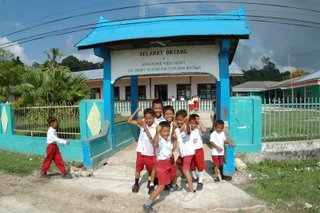
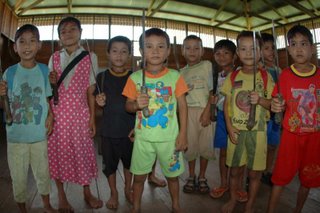
Under the relentless midday sun, we waterproofed our gear, took our malaria pills, and packed the dugout canoe that would be our home and transport for the next week. With Adi’s four year-old son in tears, we bid farewell and made our way five hours upriver to Bojokan, the next village on our itinerary. Upon our arrival, we were greeted with unabashed giggles and inquisitive stares – tourists are a very rare site in northern Siberut. In an effort to break the ice, John broke-out the day-glo pink Frisbee that he carried around for this exact purpose. The fifty or so children in the village, many of them barefoot and dressed in torn and soiled clothing, went crazy, falling over one another at the opportunity to touch the strange disc from another world.


At sunset the village’s sole generator kicked in, and the day’s three hours of electricity flowed into a handful of lightbulbs and a CD player. As the gaggle of kids at the uma, communal house, danced to the menacing beats of developing world techno, their parents told me about school fees and why this village will die in the near future. The village of some five hundred people is devoid of any humans between the ages of twelve and twenty-two. The people here, through the help of YBTI and the elementary school they built, have come to realize that education is the key to furthering knowledge and protecting their lands. Yet, the closest middle or high school, as John and I had experienced, was a five hour dugout canoe ride away. “Once the children leave,” Adi told me, “they don’t want to come back. They stay in Padang, or go to Jakarta, or to America.” And you can’t blame them. Here, where a Frisbee represents a leap into modernity, education does not just shift paradigms, but breaks down and rebuilds the community according to the demands of a more globalized society. “Yes,” Adi continued in Indonesian, “this village will be nothing but old people soon. And then it will die.” The dozen middle-aged men with whom I was smoking cigarettes laughed uneasily, then turned off the generator some fifteen minutes later. Time for bed, apparently. It was 7:30PM.

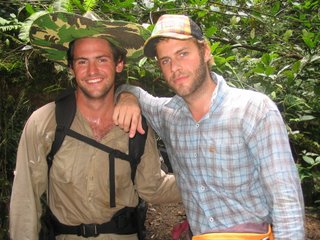
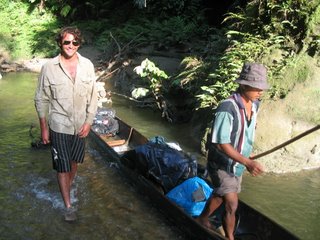
“I mean, this just makes every other trip I’ve ever been on seem cushy in comparison.” It’s the next morning, and John, a native Minnesotan with a predilection for month-long canoeing and hunting trips in northern Canada, is screaming at me over the thumping roar of the five horsepower engine that is propelling our dugout canoe upriver. Due to hallucinations from the over-the-counter anti-malarial medicine that he bought in Padang, and the unforgiving plank wood floor that we slept on the night before, John is a woozy, bleary-eyed, bedraggled mess. Our guides, on the other hand, are models of nicotine fuelled fitness. The day before, we had picked up two more guides, Yetno, a stoic thirty-something year-old, and Playboy, a raffish, heavily muscled man of the same age with a large, poorly done Playboy bunny tattoo on his left biceps. Upon entering Bojokan, I was expecting the intricate and ornate tattoos for which, in some circles, Mentawai is famous. Seeing that crude Playboy bunny was amusing, if not slightly horrifying.
As the day progressed and we left behind the illegal forestry ravaged river banks, we entered Siberut National Park. Old growth trees crept down to the water and formed massive natural arches overhead, shading us from the north island’s one-hundred-fifty-third day straight without rain. It may have been storming in the south, but the north had taken on a surprisingly arid look, some of the trees wilting and the rivers painfully shallow. We passed dug out canoes filled with slack-jawed locals who were often too stunned to return our greetings until we had passed. The day slid by with the banks of the muddy, rocky creek, until nightfall, when the intermittent gravel beds became too frequent and extensive to portage. “Tomorrow, we make the seven hour trek to Simatalu,” Adi proclaimed. “Tonight, we camp here.” Suddenly, he jammed his fist beneath the water. It emerged seconds later full of writhing river shrimp. “Dinner,” he proclaimed, with a big toothless grin.
Beyond missionaries, the only significant contact with outsiders that Simatalu has ever had was by way of calamity. In 1976, when five hundred miles to the East napalm deployment was at its peak over the jungles of North Vietnam, the Simatalu village head spent three days running through the jungle to Pokai, the closest “major city,” to inform the “outside world” that Simatalu residents were dying by the handful each day due to some ghastly sickness that traditional medicines could not cure. A doctor was helicoptered in from Padang, but due to unfavorable landing conditions, was forced to rappel into the village, where after diagnosing advanced dysentery, he distributed medicine, thereby saving the place and its citizens from extinction.
Simatalu is not on many maps, and maybe rightfully so. It is small, and average in many ways, perched on a bend in the river some ten miles from the Indian Ocean on the west coast of Siberut, home to three hundred people and perhaps twice as many chickens. There is a private elementary school, but like Bojokan and many other small Indonesian villages, it has no middle school or high school. Consequently, the town is overrun with young children, married people, and old men, while nary an adolescent is to be found.
We decided to make the arduous four-day trip to Simatalu for the reasons that by the same stroke make the place both attractive and unappealing. It is isolated, small, poor, and renowned on Siberut Island for its heavily tattooed and slightly unhinged residents. There have been several Catholic missions to the village over the past sixty years, and most children still bear the initially puzzling mark-names of the Italians who passed through – Cornelius, Januarius, and Emelius.
Simatalu is the type of place that prompts big questions, some of them banal (Will I ever taste Nutella again?) and some of them deep and probing and worthy of serious contemplation and dissection. I have been studying economic and social development academically since I started at Dartmouth, and through travels and study in Eastern Europe, Central and South America, and other parts of Asia, I have grappled with some of the practical issues that surround peoples and nations efforts to enter the globalized marketplace. Yet, in Simatalu the merits of development and globalization took on a clarity and prescience that I haven’t found anywhere else.
It is the people in between, like Fauzan said in Pokai, those who are neither part of the modern world nor still attached to their cultural and traditional roots, who suffer most from the broad umbrella of economic and cultural development that has been branded globalization. In Simatalu, where TVs and electricity don’t exist and foreigners appear sporadically – and at that, only in the form of missionaries and trekkers, as opposed to aid workers and development practitioners – life carries on much as it has for centuries, if not millennia. While most families have begun to use plastic cups and plates, cell phones, motor bikes and the internet are as abstract as America.
The argument can and has been made that it is not the developed world’s place to decide who receives the perks of a modernized life – which include the relatively recent discoveries of longer lifespans, decreased infant mortality, and increased literacy, amongst others – but that such benefits should be distributed universally. Unfortunately, along with such advances come the apparently inevitable cultural and social cleavages that have marred developing – and developed – societies across the globe. As Thomas Friedman wrote, “Globalization is like the sunrise. You can’t stop it, but you can wear sunscreen.”
The people of Simatalu, who would all be considered the Earth’s extreme poor – living on less than US$1 per day – were until very recently at one end, most would say the bottom end, of the globalization spectrum – any community that is threatened by extinction due to dysentery is certainly at the whim of a host of powerful factors. Now, however, the people of Simatalu are starting to climb the global ladder. The first generation of Simataluans will graduate from high school over the next few years. What is worrisome, though, is that even though on paper these students will have climbed the first rung towards international preparation, in reality, the people of Simatalu are not using their sunscreen.

By anyone’s definition, life in Simatalu is hard. The women wake at 3AM to kill the day’s chicken, stoke the family fire, and prepare sago, coarse, brown, tasteless bread. The men spend their days hunting, farming and sitting around smoking hand rolled cigarettes. All of the men over forty-five wear only loincloths and tobacco pouches, and most bear the traditional full body tattoos that have made Mentawai famous. When I asked one of the younger generation why no one his age has the tattoos, he replied “I want to be clean. Once you get the tattoos, you can never leave the village without feeling strange and out of place.” None of the older men speak Indonesian, only the local Bahasa Mentawai, and they have rarely, if ever, traveled beyond the hills that surround the village. The younger generation has begun to yearn for more, and that has led to all sorts of complications.
Simatalu, like most Mentawai villages, is arranged around the uma, communal house, which serves three roles as the main artery for community dialogue, the school, and the boarding house for the rare outsider who happens through. Every night, the village children gather at the uma for what are euphemistically called Catholic prayers. Pak Guru and his brother lead the children through a simplistic and heavy-handed legion of Catholic prayers, in Indonesian, before dispensing a list of commands, which are shouted back by the children in unison. The occasion is not so much prayer as mandatory indoctrination from the two power hungry and angry men who have taken the helm of the village.
The same two men, both in their late-twenties, conduct school lessons every day except Sunday, when virtually the whole village goes to church. “School” is similar to prayer. The two men stand in front of the forty or so elementary-age students shouting commands, which are responded to en masse. If a student speaks out of line, Pak Guru (literally Mr. Teacher) stops the “lesson,” storms down the uma’s steps, and grabs the offender by his belly fat above the pants line, pinching and pulling it outwards and upwards in a snapping motion until the child begins to cry, at which point the rest of the students laugh at and ridicule the offender for being the equivalent of “soft.”
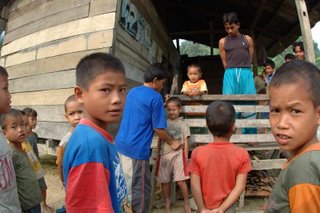
Pak Guru and his brother, in addition to administering prayers and running the village’s education program, also live in and maintain Simatalu’s uma. They have in essence taken on every role of responsibility and leadership within the village. The regal and intimidating tattooed elders of the village have been relegated to peripheral and subsidiary roles, which wholly consist of pig hunting and smoking cigarettes. Pak Guru and his brother are breeding an obviously apparent culture of violence that manifests itself in children attacking one another with machetes, villagers beating dogs to the point of shock, and women and older men playing background and marginal roles that only perpetuate the power and respect given to the two domineering and frankly frightening men. It is no wonder that children refuse to come back to Simatalu once they’ve found a way out.
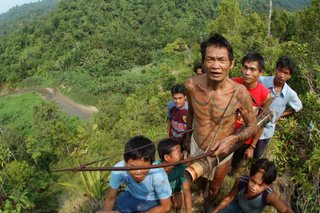
We spent our days doing as the Simataluans did. Mostly, that just meant smoking a lot of cigarettes, although one morning I did set-off pig hunting with one of the village elders. Followed by a procession of school-age kids, I could see immediately that unless they were deaf to the hollering of a dozen dirty and shoddily clad boys, no pigs would come within a mile of us. My assumption proved correct. I did however, get the opportunity to make a fool of myself slipping and sliding on vines and roots behind the tiny, lean, tattooed man who was at least twice my age. The boys scampered up sixty-foot trees and retrieved coconuts and jackfruit, which all of us consumed with the same jungle-fueled hunger.
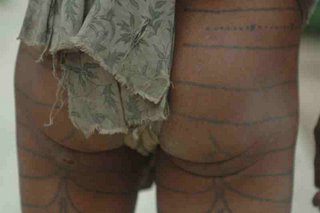
Soon after, with two weeks left in our Ramadan vacation, John and I left Simatalu. The night before we trudged off, though, John had half of our remaining money stolen from him. While he was sleeping, John had seen Playboy rifling through his bag, but he figured that the guide was just returning his playing cards. With the light of day, the truth became apparent. However, with an arduous and sketchy daylong jungle hike and at least two days in dugout canoes ahead of us, we thought it best not to confront the thief, who had otherwise been a flawless and oftentimes essential guide, helping us peel off leeches and pick our way along indecipherable and precarious trails. Ultimately, we had to arrange a special deal with Adi so that we could mail him the rest of the money we owed him. John and I could understand the impulse to perceive foreigners as walking moneybags, because, let’s face it, relatively speaking, we are. Playboy got away sixty dollars the richer, but will never work as a guide again.
As we were leaving the village, Pak Guru gave the family mutt one last resounding kick to the rib cage, thrashing the bony beast against the walls of the uma. John and I made our way out along the dirt paths between thatched houses, not even half sad to be journeying back to a world of Nutella, Frisbees, and video arcades. The people of Simatalu will give up their tattoos and buy TVs. I can only hope that they begin to wear their sunscreen, too.

0 Comments:
Post a Comment
<< Home